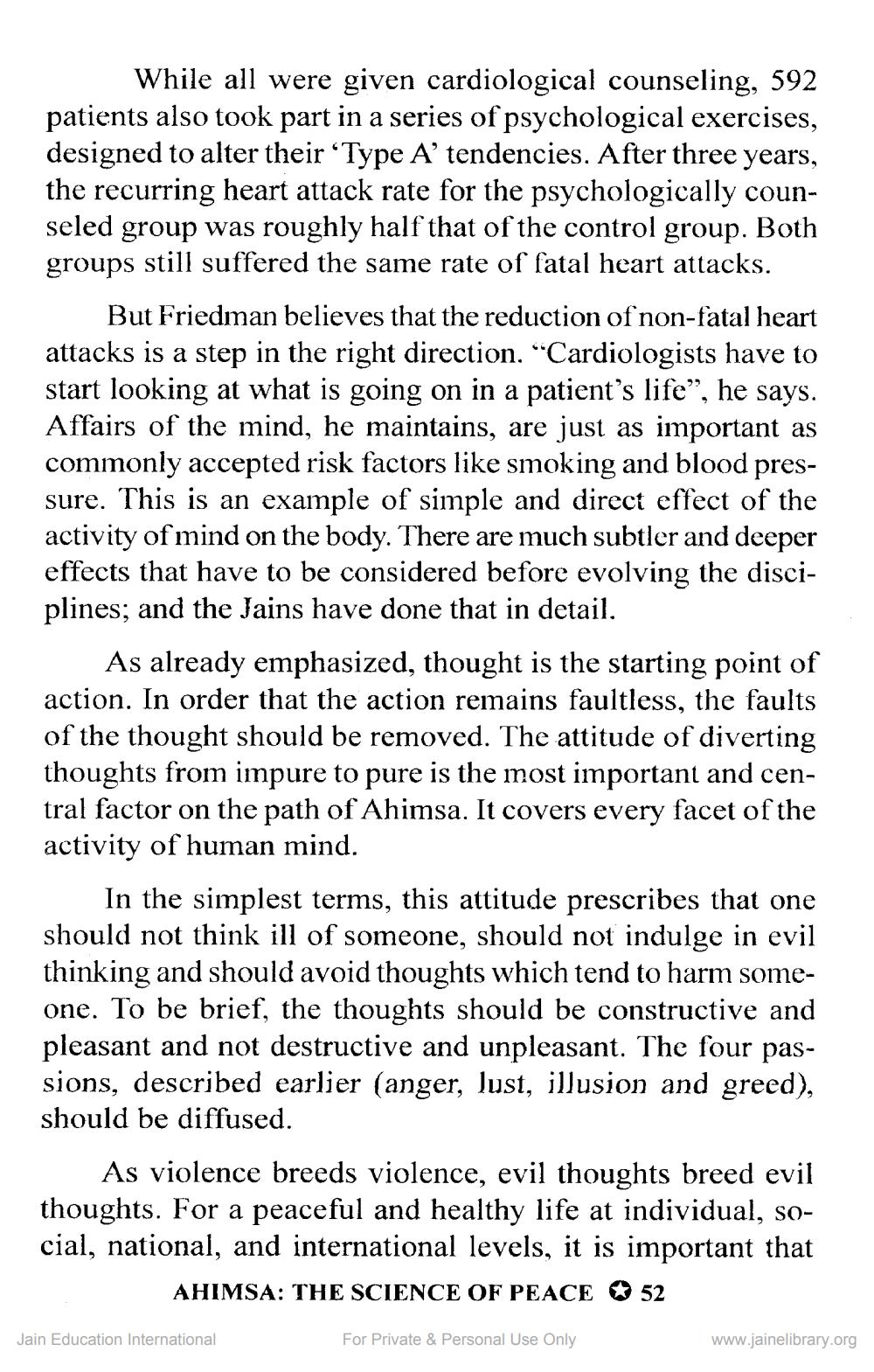________________
While all were given cardiological counseling, 592 patients also took part in a series of psychological exercises, designed to alter their ‘Type A’ tendencies. After three years, the recurring heart attack rate for the psychologically counseled group was roughly half that of the control group. Both groups still suffered the same rate of fatal heart attacks.
But Friedman believes that the reduction of non-fatal heart attacks is a step in the right direction. “Cardiologists have to start looking at what is going on in a patient's life”, he says. Affairs of the mind, he maintains, are just as important as commonly accepted risk factors like smoking and blood pressure. This is an example of simple and direct effect of the activity of mind on the body. There are much subtler and deeper effects that have to be considered before evolving the disciplines; and the Jains have done that in detail.
As already emphasized, thought is the starting point of action. In order that the action remains faultless, the faults of the thought should be removed. The attitude of diverting thoughts from impure to pure is the most important and central factor on the path of Ahimsa. It covers every facet of the activity of human mind.
In the simplest terms, this attitude prescribes that one should not think ill of someone, should not indulge in evil thinking and should avoid thoughts which tend to harm someone. To be brief, the thoughts should be constructive and pleasant and not destructive and unpleasant. The four passions, described earlier (anger, Just, illusion and greed), should be diffused.
As violence breeds violence, evil thoughts breed evil thoughts. For a peaceful and healthy life at individual, social, national, and international levels, it is important that
AHIMSA: THE SCIENCE OF PEACE 52
Jain Education International
For Private & Personal Use Only
www.jainelibrary.org




